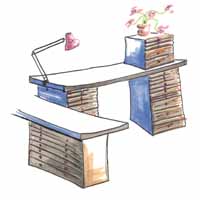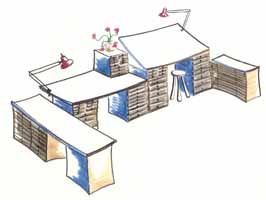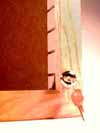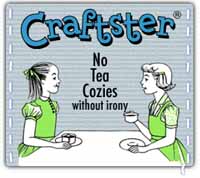Crafts:
What is the difference between an accomplished craftsman and a fiddler? Well, it must be admitted that experience and the cost of the tools (toys?) is a large part of the difference, but an equally large part of it is his or her workspace. The poor fiddler spends WAY too much time looking for the tool he or she just put down, or going back to the store for some item or material he was sure he had on hand. And finally, the poor fiddler is always pushing clutter far enough out of the way to make some small space in which to work.
The more accomplished craftsman or craftswoman (craftsperson?), on the other hand, has all the necessary tools close at hand and they are precisely organized. The supplies and materials are arranged with equal care. Finally and most importantly, the work surface, -be it a desk top, slanted drawing board, work bench, (high for close work or low enough for working on large items), is central, well lit, and precisely the way the craftsman wants it to be.

He or she probably spent no little time getting it that way too. Why am I going on in this vein so annoyingly you ask? Because my Architectural Casework is PERFECT for such. Fact of the matter is that it all started -and it's a long story,but I'll make it brief- it all started as I was trying to organize the inside of my big-old van when I was a remodeling contractor. But I digress.
Here we see a progression of these drawer cases making first a simple desk then a desk and return, then a desk,. return, drafting table and flat-file. All made out of my Architectural Casework with a little advice from my article on Designing & Building Desks & Counters.


Here are some thoughts on how to go about building yourself a terrific work-place.
* Consider buying a new (un-drilled) door as a work-bench top. Solid -core if you need to bang on it -and have some help carrying it around- or a hollow-core door if you you are doing dainty things on your work-surface.
* Use lots and lots of appropriately sized drawer cases to hold tools and materials you don't use all that often
* Use a display case to put protect your most needful tools on the wall and close to hand.
* Spend no little effort in lighting your work surface. (Background lights like fluorescent and articulated incandescent for close work.)
* If you use sharp or dangerous things, (or have little kids about), use a locking display case.

For the whole she-bang of growing yourself the perfect craft work-space, check out my Architectural Casework Slide Show.
Interesting Links:
![]()
Dick Blick is simply the best place to buy arts'n crafts supplies. And if you have a artist wan'a-be in your life, (and you are real cheap), their catalogue is a great gift all by itself. But the best thing about Dick Blick is what it does to your tongue when you say Dick Blick Dick Blick Dick Blick Dick Blick Dick Blick Dick Blick.... see what I mean?
 MicroMark makes the COOLEST* little tools. For model makers and such. Like many of the tools in my shop, but they fit on a desk and you can use them sitting down!
MicroMark makes the COOLEST* little tools. For model makers and such. Like many of the tools in my shop, but they fit on a desk and you can use them sitting down!
* I use a word like "coolest" because it harks back to my childhood when I made a lot of models & other odd little things. It whould'a been so boss-wicked-cool to have some of these back then.
I like this site and I'm not ashamed to admit it. Crafster is (almost assuredly) for women and involves way too much fabric for this old wood-worker, but it's well organized, has wonderfully creative stuff, and doesn't take itself too seriously.
 Also a little too much fabric & fru-fru, but it's also interesting and well organized. CraftTown has a lot of instructions and How-To.
Also a little too much fabric & fru-fru, but it's also interesting and well organized. CraftTown has a lot of instructions and How-To.
 Now Instructables has something for everyone. How-To do things with computers, cook, save energy, make liquor, or blow things up.
Now Instructables has something for everyone. How-To do things with computers, cook, save energy, make liquor, or blow things up.
